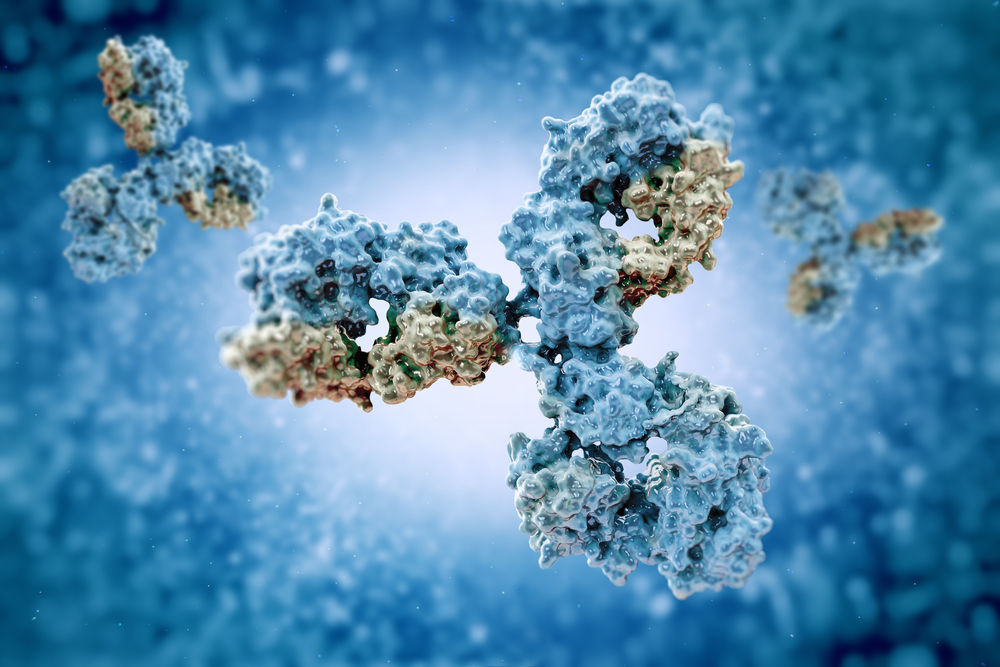Repeated Doses of Rituximab May Improve AAV Patients’ Response to the Medication, Study Suggests
Written by |

Administering rituximab repeatedly may improve the response of patients with ANCA-associated vasculitis (AAV) to the medication, a study says.
The findings were reported in the study, “Non‐Linear Rituximab Pharmacokinetics and Complex Relationship between Rituximab Concentrations and Anti‐Neutrophil Cytoplasmic Antibodies (ANCA) in ANCA‐Associated Vasculitis: The RAVE Trial Revisited,” published in Clinical Pharmacokinetics.
Anti-neutrophil cytoplasmic autoantibody (ANCA) vasculitis, or AAV, is an autoimmune disease caused by the production of autoantibodies — antibodies that wrongly target and attack healthy cells. This leads to blood vessel inflammation, and swelling in affected tissues and organs.
Rituximab (sold as Rituxan, among others) is a monoclonal antibody that binds CD20, a protein found on the surface of certain healthy and malignant B-cells, destroying them. The medication has been approved by the U.S. Food and Drug Administration (FDA) for two types of AAV — granulomatosis with polyangiitis (GPA) and microscopic polyangiitis (MPA).
In AAV patients, rituximab works by decreasing the levels of harmful ANCA autoantibodies, which normally target the proteinase 3 (PR3-ANCA) or myeloperoxidase (MPO-ANCA) proteins in certain types of immune cells. However, previous studies performed in patients with different types of blood cancers receiving rituximab have shown the medication led to a non-linear elimination of CD20.
In this study, researchers from the Université de Tours in France sought to investigate the non-linear mode-of-action of rituximab and the relationship between rituximab dosing concentrations and the levels of autoantibodies found in AAV patients, using mathematical models.
The study was based on data from 92 AAV patients who participated in the RAVE Phase 2/3 trial (NCT00104299), a multi-center, randomized, double-blind, placebo-controlled study designed to evaluate the effectiveness of rituximab in GPA and MPA patients, compared to conventional therapies.
Mathematical models were used to describe the pharmacokinetic properties of rituximab, as well as its effects on the levels of PR3-ANCA and MPO-ANCA found in the blood of AAV patients. Of note, pharmacokinetics is the study of how a drug is absorbed, distributed, metabolized, and eliminated from the body.
The mathematical models generated by investigators were adjusted to the trial’s data, describing the relationships between rituximab’s dosing concentration, treatment duration, and effect.
Models estimated the mean non-specific clearance of rituximab (non-specific drug elimination) was 0.15 L/day, but this was influenced by the type of AAV a patient had, as well as the amount of B-cells at baseline.
Rituximab led to a deep, but delayed, reduction in ANCA levels, although its effects varied according to ANCA subtype. It took 18 days to eliminate 50% of PR3-ANCA, and 24 days to eliminate 50% of MPO-ANCA found in the patients’ blood. While the effects were faster for PR3-ANCA, responses were sustained for shorter periods of time.
“The decrease in ANCA levels was deep but delayed, and was more sustained in patients with MPO-ANCA than in those with PR3-ANCA,” the investigators said.
Researchers also examined the effects of one versus multiple courses of the therapy, each involving four weekly infusions of the treatment. Simulations suggested that repeated rituximab courses — particularly four courses within 18 months, or six courses within 20 months — led to deeper and more sustained decreases in ANCA levels, compared to a single course of the drug.
“This study suggests that repeating courses of rituximab might improve clinical response to rituximab,” researchers concluded.





